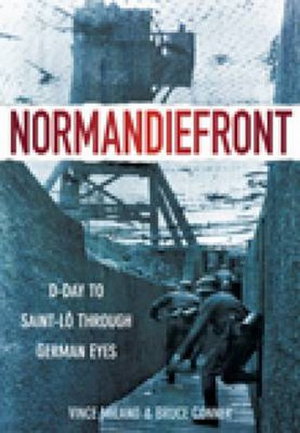
PublishedHistory Press, May 2011 |
ISBN9780752459783 |
FormatSoftcover, 288 pages |
Dimensions26cm × 18cm × 2cm |
You probably already know the basic story of what happened on D-Day - but it is almost certain that your knowledge is based upon books written from the Allied perspective. "Normandiefront" provides a fresh and unique exploration of the greatest seaborne invasion in history.
It also explains just why the Americans on Omaha beach suffered the Longest Day of all. As the ramps went down and the Amis plunged into the water, their commanders expected them to face just one battalion of mediocre occupation troops - but the veterans and the new recruits of the 352nd Division were waiting instead. Authors Vince Milano and Bruce Conner have interviewed the surviving members of that formidable fighting force - at the same time amassing a collection of German and Allied photographs and documents, many of which are published here for the first time. The fight to get off the beach and then the seemingly interminable struggle through the bocage - from hedgerow to hedgerow, as the German line fell back only to reform and counter-attack time and time again, all the way to the ruins of St Lo - was one of the most intense ever experienced by any army.
Generalleutnant Dietrich Kraiss' deployment of his men is a fascinating military case study in itself. The General, responsible for the stretch of coastline that included Omaha beach and part of Gold beach, was an Eastern Front veteran, as were many of his men. He was therefore used to facing an adversary who outnumbered and outgunned his forces and was well versed in the tactics of defence and counter-attack. The division actually expected to be sent East any day and had been trained for it. Denied the use of one third of his division during the crucial first hours of the invasion that had been held in reserve by higher commands, he tenaciously held his ground until they were released and then mounted a skilful defensive campaign. The reinforcements needed to contain the Allied breakout from the beachhead never came - partly because German High Command refused to accept that Normandy really was the main invasion target and not Pas de Calais. As the authors point out, 'Any Grenadier in the 352nd could have told them differently.' With over 200 photographs and those priceless interviews with German veterans, "Normandiefront" is an important addition to the literature of World War II, telling as it does the story of how one German division changed the course of the invasion and almost the entire war.

